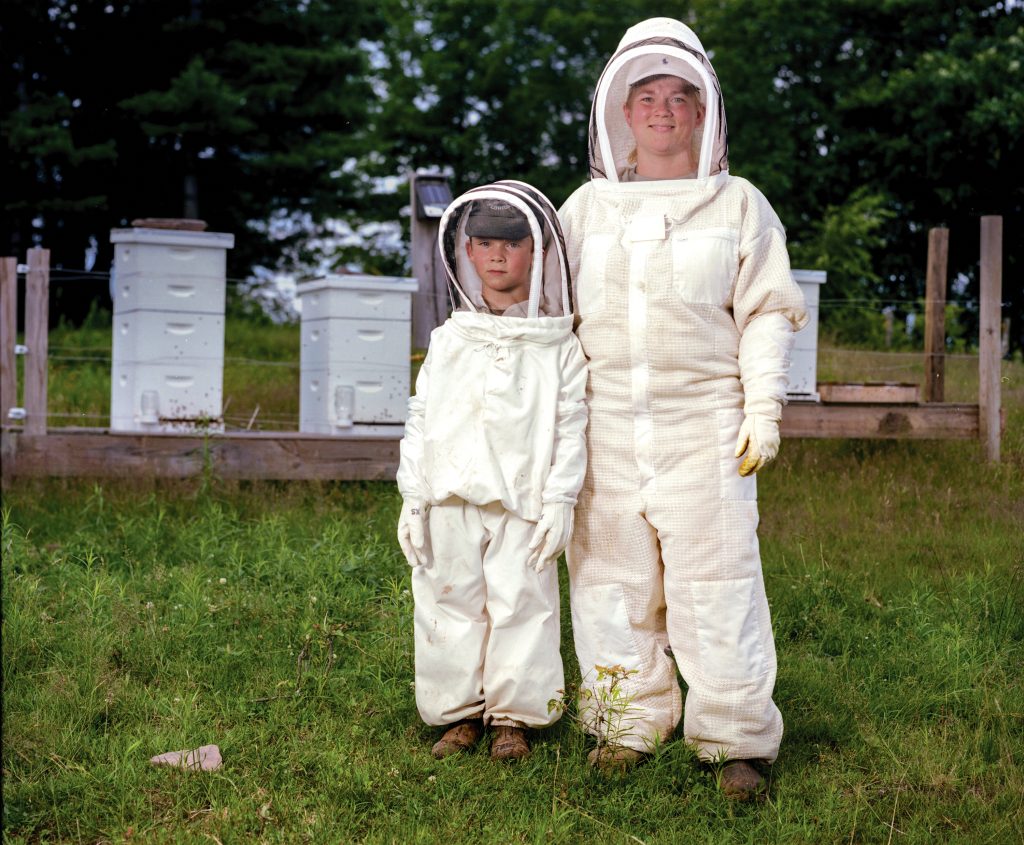
Plowline: Images of Rural New York. A project of The Farmers’ Museum supported by the Gipson Family. Gift of Wesley Bernard. F0003.2019(02))
‘The Buzz about Pollinators’ Opens May 11 at The Farmers’ Museum
COOPERSTOWN—On May 11, The Farmers’ Museum opens a new exhibition in its Main Barn, “The Buzz about Pollinators.” The exhibition looks at three of New York’s important agricultural products—apples, maple syrup, and honey—with a particular focus on the role of bees and other pollinators in their cultivation. Furthermore, the exhibition examines what we can do to help pollinators thrive in the face of climate change and other challenges.
One out of every three bites of food we eat depends on pollinators. Around the world there are 1,400 crop plants that produce all our food and plant-based products, and most require pollination by animals. Crops such as apples, grapes, cherries, onions, pumpkins, and cauliflower in New York State rely heavily on pollinators. Native bees accomplish about a quarter of insect agricultural pollination in the United States, serving commercial crops such as fruit trees, berries, melons, and garden vegetables. There are an estimated 450 different species of bees in New York and around 430 of these are native bees—the most important wild pollinators. However, a New York State survey, supported by Cornell University, found that more than half of our important native pollinators may be at risk of disappearing. As in other parts of the country, our native bees, and butterflies such as monarchs, are suffering a decline in numbers. Half of studied bumble bee species in the U.S. are in decline, while Monarch butterfly populations have decreased by 80 percent over the last 20 years.
In addition to exploring the mechanisms of pollination and the importance of pollinators for local crops, the exhibition also offers practical tips for ways visitors can help their local pollinators thrive. Designed with accessible interactive components for children, the exhibition offers useful and engaging information for citizen scientists of all ages.
“The Buzz about Pollinators” is sponsored in part by Nellie and Robert Gipson, and NYCM Insurance.
In conjunction with this exhibition, the Otsego County Conservation Association will host Dr. Jeffrey Heilveil at 7 p.m. on Wednesday, May 15 at The Farmers’ Museum, as part of its “Be Informed” lecture series. Heilveil will speak on the subject of native pollinators. The exhibition will be open 30 minutes before and after the lecture for attendees wishing to view. The program is free and open to the public.
“From well-known bumblebees to leaf-cutter bees, hover flies, and hawk moths, there are hundreds of different pollinator species in Otsego County,” according to an OCCA press release. “The lecture will examine some of our native pollinators and the plants they pollinate, both common and rare, and explore how we can best support these hardworking species.”
Heilveil is a professor and chair of the Biology Department at SUNY Oneonta, where he teaches courses in entomology, aquatic entomology, and stream ecology. His favorite classes are the field-based courses he teaches in the summer on the Thayer Farm property of the SUNY Oneonta Biological Field Station. His research primarily focuses on how human alterations to rivers affect stream insects. Heilveil earned his master’s and doctorate in entomology from the University of Illinois.
The Farmers’ Museum, located at 5775 State Route 80 just north of the Village of Cooperstown, is currently open Tuesday through Sunday, 10 a.m. to 4 p.m. (closed Mondays). Starting May 25, the museum is open daily from 10 a.m. to 5 p.m. Visit farmersmuseum.org for more information.

